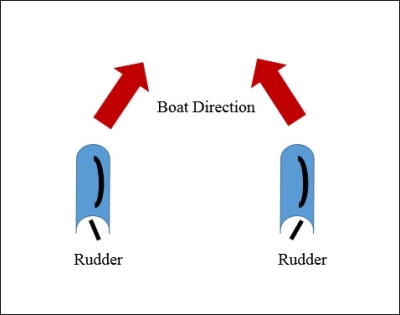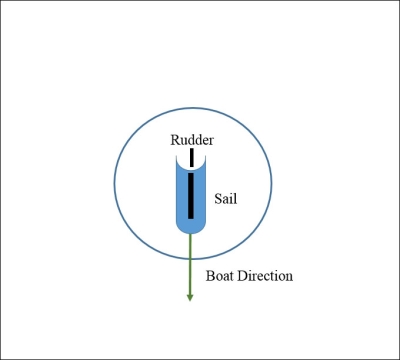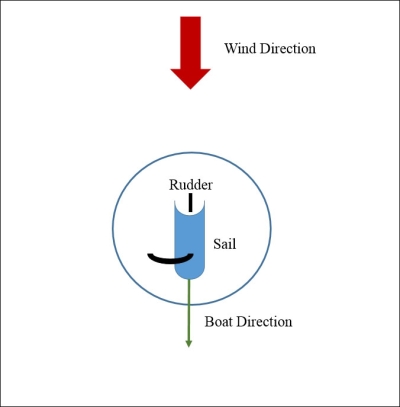Now that you have set up everything, pack up your electronics in any sort of water-resistant plastic case, and your sailboat should be ready to sail.
Note
One word of caution
Electronics and water normally do not mix well. Make sure that your BeagleBone Black and all the associated circuitry is well buttoned up in as watertight a container as possible. Use a silicon sealant or some other waterproof sealant from where your wires enter or leave the enclosure.
Your sailboat can now sense wind, control the rudder and sail, know where it is and what speed and angle it is moving at, and calculate the bearing and distance to a new destination. In order to complete your robot, you'll need a bit of information on how to sail. First, as a word of caution, this is not coming from an expert sailor, but there are many excellent tutorials on sailing. Try www.simpleeditions.com/61001/how-to-sail for more information on the details of sailing. Also, you'll find a very interesting interactive tutorial on sailing at www.sailx.com.
But, perhaps, some basics are in order. To keep it simple, you need to concern yourself with five things—three inputs and two settings. The first input is the current location, direction, and speed. These will all be available from the GPS unit. The second input is the desired destination location—something that you'll need to program your sailboat to understand. The third input is the wind direction, which will come from the wind sensor.
The first of the two settings is the rudder setting. The rudder is set by controlling the servo attached to it, and it can be straight with the boat, or pointed to the left at some angle, or pointed to the right at an angle. To turn the boat, you will simply set the rudder to the correct position to create a turn. Here is a diagram of the rudder positions for a right and left turn:

The final setting is the sail setting. This setting can be either in, that is, the sail is pulled tightly so that it is in line with the boat, or out, that is, it can swing out to the side of the boat.
Now let's understand how to sail your boat both with and against the wind. Here is a diagram that will help you understand the concepts of sailing:

In this case, the diagram shows that the sail is in, and your rudder is in line with the boat. Now let's introduce some wind. If you want to sail with the wind, your boat's rudder and sail should be configured like this:

To sail directly with the wind, your rudder should be in line with the boat, but the sail should be all the way out, thus allowing maximum area of the sail to get exposed to the wind. Now it would be wonderful if the wind is always behind your sailboat, but that won't be the case. There will be times when you will want to sail perpendicular to the wind, and even times when you will want to sail against the direction of the wind. So let's look at how to set up your sailboat for these cases.
For the case where you want to sail perpendicular to the wind, you'll need to configure your boat like this:

This is called a beam reach, and once you have made any turn, you'll adjust your rudder to be straight behind the boat again. The sail will be out at about 45 degrees, or half way between in line with the bow and stern, and all the way to the side.
Now let's cover the case where you want to sail into the wind. First, you need to realize that you cannot sail directly into the wind. This is called irons. However, if you point your boat at least 60 degrees from the direction of the wind, you can sail in that direction. Here is a diagram of this orientation:

The problem with this is, if you sail in this direction, you cannot reach a destination that is less than 60 degrees in the wind direction. To reach destinations in this area, you'll need to do a manoeuvre called a tack. To tack is simply to use a set of manoeuvres, crossing back and forth at a 60 degree angle into the wind, so that you can arrive at a destination that is directly against the direction of the wind. Here is a diagram of tacking:

You now have all of the information you need to construct your sailing program.
